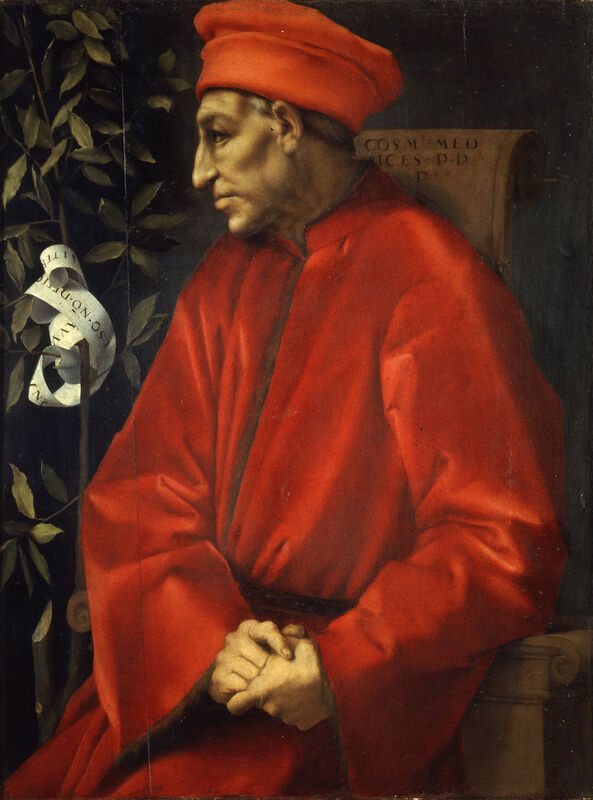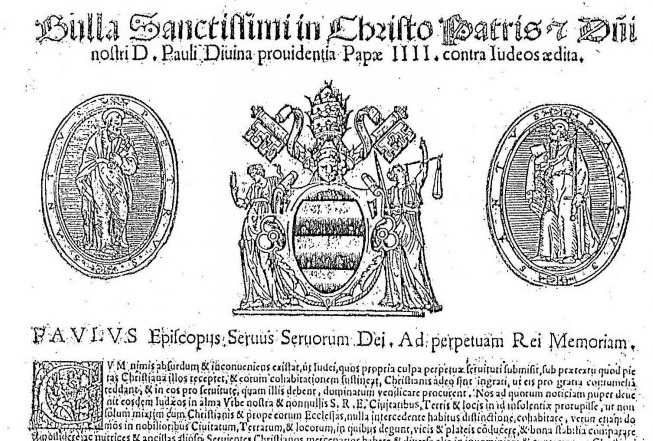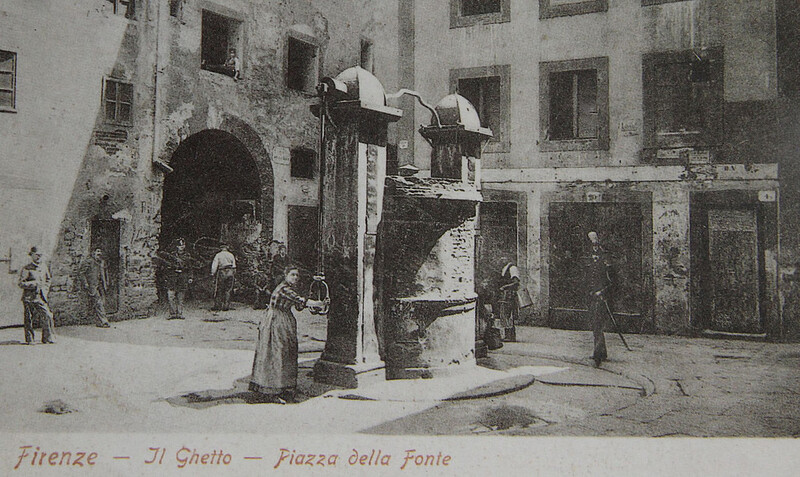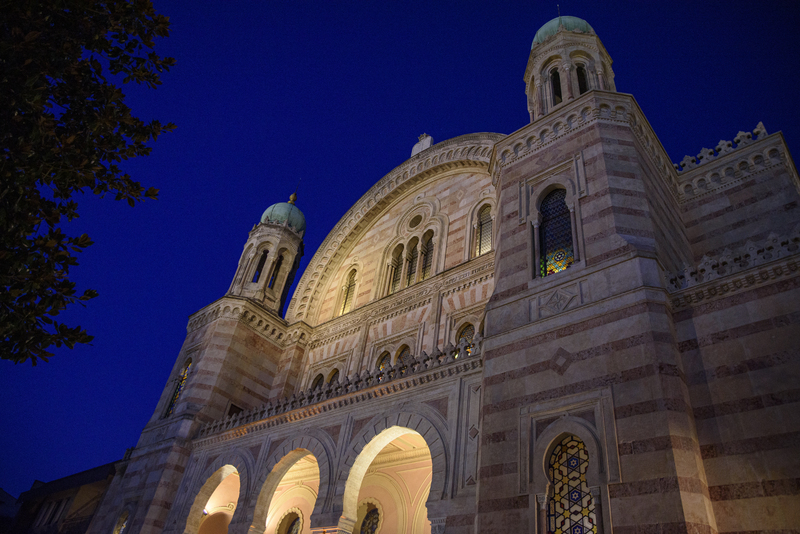Firenze
There is fragmentary evidence of Jewish presence in Firenze since the early Middle Ages; but the historically proven presence of a Jewish community is often considerd to begin in 1437, when Cosimo de' Medici “Il Vecchio”, back in Florence after his exile in Venice, allowed some Jewish money lenders to live and operate in the city. The first synagogue was in via dei Ramaglianti, not far from Ponte Vecchio on the left side of the river (the last vestiges of the building did not survive WWII). After a period of relative tolerance towards Jewis, Roman church policy and the elevation of Cosimo I to the title of Gran Duke were determinant factors in the creation of the Ghetto in 1570.
The act, confining Jews in a specific part of town, and enacting restrictions both personal and collective designed to enforce and maintain separation between them and the Christian majority, followed the analogous decisions in Venice (1516) and in Rome (1555, together with the proclamation of the infamous “bolla” Cum Nimis Absurdum by pope Paolo VI). The ghetto, furthermore, answered also to the intentions of Cosimo I to put every aspect of communal life under direct control of the State; and economical reasons, as all the areas of the Ghetto would be poperty of the Gran Ducjy and as such create new income through the Jews' rental fees.
Florence Ghetto was certainly not a complex melting pot as its Venetian counterpart: for the most part, the Jews who lived within it were “Italiani” and “Levantini”. Two “scole”, Scola Italiana and Scola Spagnola, were the main religious centres. The two main rites coexisted during the Ghetto period, but already in the first half of the XIX century the governing institutions of the Community were considering uniting both synagogues in one, which would have followed the Spanish – sephardic – rite, which was evidently becoming dominant.
So it is no surprise that when the Ghetto doors were torn down, and soon after the whole area was demolished to make place for renovations and a new Piazza (now Piazza della Repubblica), the new synagogue that was built in the area of the Mattonaia took up the Sephardic tradition, and was built with the Moorish style in mind. Italian rite was still followed in a small synagogue in via dele Oche, which ceased to function soon after WWII.



